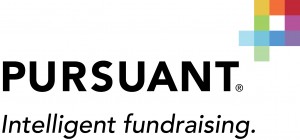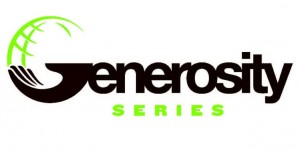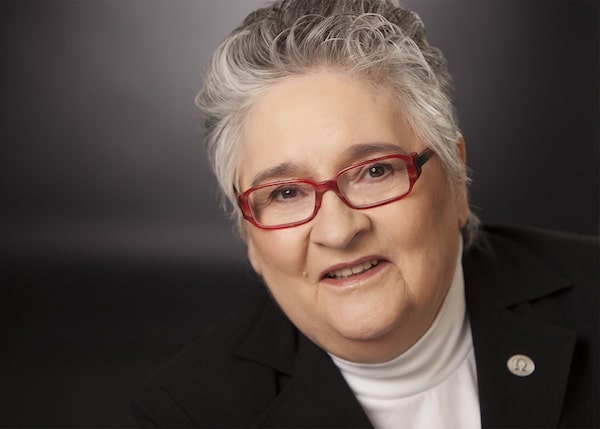Big Nonprofit Ideas for the Other 95%
I love our sponsors!
Do you want to find more prospects & raise more money? Pursuant is a full-service fundraising agency, leveraging data & technology.
It’s not your 7th grade spelling bee! We Bee Spelling produces charity fundraiser spelling bees with stand-up comedy, live music & dance. It’s all in the video!
Get Nonprofit Radio insider alerts!
Listen Live or Archive:
- On Fridays at 1pm Eastern: Talking Alternative Radio and tune in
- Listen to the August 19, 2016 archived podcast
My Guests:
Dolph Goldenburg: Your Supercharged Board

Dolph Goldenburg reveals his wisdom for revitalizing your board committees; making your board meetings effective; and keeping engagement civil. He’s the author of the book “Successful Nonprofits Build Supercharged Boards.”
Laura Norvig, James Porter & Kivi Leroux Miller: Your Content Calendar

What belongs in it? Who do you need to help create it? How do you get buy in? And how about resources to help you? Our can-do content calendar committee from the Nonprofit Technology Conference is Laura Norvig from ETR, James Porter at The END Fund and Kivi Leroux Miller, founder of Nonprofit Marketing Guide.
Top Trends. Sound Advice. Lively Conversation.
You’re on the air and on target as I delve into the big issues facing your nonprofit—and your career.
If you have big dreams but an average budget, tune in to Tony Martignetti Nonprofit Radio.
I interview the best in the business on every topic from board relations, fundraising, social media and compliance, to technology, accounting, volunteer management, finance, marketing and beyond. Always with you in mind.
Get Nonprofit Radio insider alerts!
Sponsored by:
Processed on: 2018-11-11T23:33:22.023Z
S3 bucket containing transcription results: transcript.results
Link to bucket: s3.console.aws.amazon.com/s3/buckets/transcript.results
Path to JSON: 2016…08…303_tony_martignetti_nonprofit_radio_20160819.mp3.261978147.json
Path to text: transcripts/2016/08/303_tony_martignetti_nonprofit_radio_20160819.txt
Hello and welcome to tony martignetti non-profit radio big non-profit ideas for the other ninety five percent. I’m your aptly named host. Oh, i’m glad you’re with me. I’d grow a foe set if i saw that you missed today’s show you’re supercharged board dolph goldberg reveals his wisdom for keeping engagement civil, revitalizing your board committees and making your board meetings effective. He’s, the author of the book successful non-profits build supercharged boards and you’re content calendar what belongs in it? Who do you need to help create it? How do you get the buy-in and how about resources to help you? Our can do content calendar committee from the non-profit technology conference is laura norvig from e t r james porter at the end fund-raising founder of non-profit marketing guide between those on tony’s take two solitude. We’re sponsored by pursuing full service fund-raising data driven and technology enabled, you’ll raise more money pursuant dot com and by we be spelling super cool spelling bee fundraisers. We be spelling dot com. I’m glad that dolph goldenburg is with me. He is managing director at the goldenburg group. Before consulting, he was executive director of an aids service organisation. In atlanta and an lgbt community center in philadelphia, he has more than a decade of fund-raising experience dafs company is at goldenburg group dot com dolph welcome. Thank you, tony it’s. Good to be on. And i have to give you a very you know, it’s, i’m not tryingto humble myself and, uh, you know, be in your in your pocket right away. But i have to apologize because, uh, when i first introduced the segment, i called you dolph goldberg, but that is not correct. Your name is dolph goldenburg. No worries at all of the common short shorthand for the name. Well, okay, well, but inappropriate shorthand. You you have it’s, like calling me martignetti. You know, there is that there is that syllable in the middle. So it’s, dolph goldenburg all right. And you were just recently married. Just last month. I wa sai wass after about ten years together, my husband and i decided to make it legal. So we had a very small wedding with just friends and family outstanding. And that was up in new england, right? That actually was indeed deep, deep south georgia. We’re going ok. Thie twin city metropolis twin. City of helena mcrae, georgia. Okay. I don’t know where i got northeast, but new england. But you are exactly opposite. A small town, georgia. Wonderful. Congratulations. Thank you. And congratulations on this book. Um, why, uh why do we need a book on supercharging boards? That’s. A great question. I have been an executive director for about a dozen years. And? And what i found is an executive director. Was that both my my work as a needy, but also the organization’s mission was was always either supported or made more difficulty because of the board. And what i found was that the time that i would invest in board development and the board would invest in its own development always paid strong reward. You have an interesting personal journey. Is tio how you came to write the book? I do. Actually, i i had been at a housing aid service organization gosh, for about almost five years or so and and realized that i was starting to have a midlife crisis. And so, unlike most people have a midlife crisis, i didn’t have an affair. I didn’t get a corvette. What i did do was i gave ten. Months notice that my job as an executive director and i planned an eight month long sabbatical and my my plan really on that sabbatical. Wass to think about what? What i had done well in my career what i had done poorly in my career and then really kind of put all of that down in terms of my lessons learned around board development and so through that door during that sabbatical, i sort of travel the world. I went to vietnam and cambodia for two months. I hiked around in peru for a month. I hide out west for a month. But between each of those trips, i would come back home. And i would work on this book, which, while it is very short, took, you know, about five or six months to write, and it has tend different zoho areas of topics of improvement for boards were only going to have to time to touch on three, maybe four depending how we go. But, you know, so the message is, you know, you gotta buy the book for the foot for the full ten. I love that message. Thank you. Thank you. All right, and and you’re you’re being very gracious there. I messed up your name. I got your wedding location wrong. We’re starting. I i can’t imagine interview it’s starting worse. But you’re being very kind and gracious, so we’ll get to it. It can only get much better now. Hopefully, i have more the facts, correct. You know, i feel like the interview’s going well, thank you. I do two. Absolutely. All right. Let’s get started. Rules of engagement. You want you want to seymour? Civility on boards? Yeah, and, you know, and and not just not just civility, stability is really important. But board have to sit down and say, what rules are we going to live? These are not the governing rules. These air, not the expectations that every boardmember should have, but they’re really you know, how are we going to interact with each other? What behavior is okay? And his not okay. And civility is a big part of that, you know? But you know, as some other examples we have all seen the boardmember who was the naysayers? Whatever comes up, they try to shoot it down and that’s not on ly unproductive for the board, but it’s also really unproductive for that individual boardmember because what ends up happening is if every time they open their mouth, people sort of roll their eyes. And they just tuned the naysayers. Yeah, this is the person loses credibility. But right now, how are we going to deal with this? Ah, this gadflies, this nay sayer. Well, so i believe that the first thing we do is we help the board developed its own rules of engagement. And so as an example, what would come out of that is, you know, being the naysayers is not okay. And once the board has generally come to alignment on that note, i did not say concensus, but actually come to alignment because, you know, if ninety percent of the board feels that way that’s probably what it should be. So, you know, so once the board has come to an alignment on, for example, may saying is not okay or, you know, or what happens in the meeting stays in the meeting, those types of things. Then when people move beyond that and kind of step outside of the rules of engagement, then the board chair or the governor’s chair can have a conversation with that person and really start to bring them back into alignment on the rules of engagement. Okay. And, of course, the naysayers air going toe may say that rule so on your your your point about alignment? Not not one hundred percent consensus, right? Right. We want to be prepared for the naysayers today. Say that they saying rule right? Yeah, i love the way you said. Okay, well, i spit it out fast. All right? I’ll tell you what, let’s, take our guy lily for a break. And dolph, of course, you and i are going to keep talking about the supercharged board, revitalizing committees and making meetings effective. So stay with us. You’re tuned to non-profit radio tony martignetti also hosts a podcast for the chronicle of philanthropy fund-raising fundamentals is a quick ten minute burst of fund-raising insights published once a month. Tony’s guests are expert in crowdfunding, mobile giving event fund-raising direct mail and donor cultivation. Really all the fund-raising issues that make you wonder am i doing this right? Is there a better way there is? Find the fund-raising fundamentals archive it. Tony martignetti dot com that’s marketmesuite n e t t i remember there’s, a g before the end, thousands of listeners have subscribed on itunes. You can also learn maura, the chronicle website. Philanthropy dot com fund-raising fundamentals the better way. Welcome back to big non-profit ideas for the other ninety five percent adult let’s let’s hit a few more of these rules of engagement. Ah, i don’t want you don’t want this to sound like a battlefield plan or something, but but ah, in fact, your first one is the is the civility rule. So this the board meeting’s should not be a battlefield. All right, working through committees, we’re going. We’re going to talk a little about revitalising there shortly, but you gotta work through the structure, right? Right. So so one of the rules of engagement the board’s often come up with is if someone has a great idea the place to bring that is to the appropriate committee, not to the full board. And then you really let the committee deliberate on that idea developer recommending agent if it’s appropriate and bring that the full board because really, the full board just doesn’t have time to deal with all the good ideas that are percolating up. Is that it? Absolutely. The the work of a bored is done in its committees and one of the one of the things that i always kind of saying, this is sort of the committee math, if you will, is that if you have got five committees that meat between every board meeting for just ninety minutes, what that means is that committee dill deliberation is seven hours boardmember can’t be seven hours long, but when you have five committees each meeting for ninety minutes, you get more deliberation and you get better recommendations and decisions coming to the board. There also is an expectation that boardmember sze will prepare for committee and full board meetings. Absolutely, you know, nothing is more demoralizing both to senior staff and bored leadership, then for board members to show up having already received the meeting packet, but not having read the reports on these financials because then, really, what happens is the committee reports are just reading what they’ve already written what’s mohr has part of that expectation not also means there’s an expectation on the staff, and that expectation is that meeting packets go out with enough lead time that board members can actually review them. I swear i’ve been to board meetings where there are members opening their their packets for the first time, and, you know, they’re there cramming ten minutes. Before the board meeting is about to be called to order, right? And you know what those boardmember often don’t realize is that it is painfully obvious in the meeting who read the meeting minutes and the meeting packet and who did not read the meeting packet it is it comes out, you’re you’re gonna be you’re gonna be you’re gonna be exposed, you might not be called out, but it’s going to be obvious, right? All right. Um, confidentiality right way got to keep the organization’s promise is close to us, right? And it’s, not just confidentiality within, like, in terms of inside the organization’s. Obviously, what is said in the board meeting does not go outside of the organization, but it all does not go to other staff. So, you know, so any staff member not present in the board meeting should also not be privy to the deliberation of the board and one more that you have rules of engagement dahna whether you have authority to represent the organization, talk about that one, right? So, you know, so oftentimes they’re our board members, i shouldn’t think oftentimes sometimes there are board members who feel that they have the authority to speak on behalf of the organisation every now and then. In fact, when i started one, jobs and executive director someone to actually find a contract on behalf of the organization, they were not a boardmember they did not have the authority to do so, and we had to find a way to back out of that contract, you know? So they also do not have the authority to individually sign a contract unless the board has voted and given them that authority. Now all these rules should be adopted by the board, right? That’s what you were saying earlier, but right, right, but and i also think that the board should sit down and see and have a discussion and see if there’s other rules of engagement that are appropriate for them as a board and again to meet these air different from expectations, you know, you know, expectations are, you know, attendance personal giving expectations are a little bit higher level than rules of engagement, right? And that’s, another part of your book expectations, i just i feel like a lot of guests have covered those, but i’ve never seen you know, we haven’t talked. About rules of engagement and and some of these that you’re talking about, like the like the civility and the the the naysaying, the naysayers way have covered those before. So i like like, this whole this also area the book, and if i could say the civility is really a very positive way of saying no bomb throwers kind of like naysayers, we’ve all seen bomb throwers and board meetings and it’s it’s not effective for the board, you have any, uh, any and any bad stories you want to tell. Oh gosh, you know, i’ve only been permanent executive director of your organization, so i don’t want to get anybody in trouble by telling that story, but by telling a story, but but i will share with you that that i have seen one board where, at every single meeting, you know, this person was completely and totally negative, not just being in a sayer, but completely and totally negative about everything and, you know, was literally throwing, you know, little mini bombs into the meeting to kind of set up disagreements between other board members and then we just sit back and watch them fight for goodness. And obviously that someone who we had to move off the board, i should say, right, right, totally negative influence. Yeah. Okay. Um, let’s go teo to our committee structure, revitalizing committees. Why don’t you want to open this when our pal you want to start with with this kind of work, you know, one of the things that i said before that, you know, really ineffective board, a supercharged board does the vast majority of its work through committees, committees will always have a larger bandwidth and a deeper bench of expertise to deliberate on strategic issues that are facing an organization is part of that one of the things that i recommend is that every committee have an annual plan, so, you know, so they know what they’re responsible for that year. Ideally, they’ll have to read a four goals for the year, but then they also say, ok, if we’re gonna have, you know, six meetings every other month, meeting one we want to cover x meeting to we want to cover something else meeting three, so so that way they’re always moving the ball forward on these projects, but they’re they’re also making sure that what? They do is in alignment with the strategic plan and the organizational goals. You said it earlier. The work of the board is done through the committees. Right. Okay, so we need our committees to be effective and revitalized. As you say in the book, let’s, talk through some of the essential committees. Just in case people are not familiar with the work of the executive committee is so, you know, so often times. And let me say that some organizations have justin executive committee. Some organizations have just a governance committee, and some have both and there’s. And depending what the structure is, sometimes there’s some overlap between those two committees. But, you know, typically what the executive committee does, is it it sets the agenda for board meetings. It it liberates or makes decisions on behalf of the board between meetings when absolutely necessary, that should not happen on a regular basis. And then if there’s not a governance committee. Oftentimes the executive committee is also responsible for enforcing expectations, you know, ensuring the committee’s air meeting on a timely manner, ensuring that conflicts of interest are disclosed and deliberated and voted on by the full board. But if there is a governance committee that typically goes to the governing committee now, just like the committee’s air setting ah plan for the year is the executive committee setting up a board plan for the year? Absolutely, you know, ideally in its first month of the year, the new executive committee wants to sit down and think about what the strategic plans goals are for the year, determine which committees can help drive those goals forward and then and then work with those committees. They developed their annual plan as well. Now off. And i think also a part of that, and this is going to bleed over a little bit latto making meetings effective. The executive committee also needs to figure out what the organization’s calendar is, including the board calendar, and make sure that that is in the plan as well. The all the committee chairs sit on the executive committee, right? And it depends for some organizations. Every committee chair sits on the executive committee and other organizations. That’s, just the officers and, you know, again, to a great extent, it probably depends whether there’s a separate governance committee or not. Okay. Okay, so it’s so. Meaning, if you have a separate governance committee, then what? You, you don’t need all the committee chairs on the board, on the executive committee. So, you know, so, so if you’ve got a separate governance committee, then you might actually want all of the committee chairs on your executive committee, because because then what they’re doing, they’re setting the agenda, and and they’re doing sort of, like, very high level board work. But if there’s, not a governance committee and the executive committee, is also responsible for enforcing expectations, ensuring disclosure of conflicts of interest, you know, those those legal obligations that every board needs to be taken care of? You probably want a smaller group of people working on that, okay, so strike three for me, it’s a good thing. I’m the host of this show because i misread that one, too, okay, sorry here, all right. Yeah. It’s a good thing. I’m in charge of the show. All right, let’s. See what else? Another committee finance. And i was finance. Is this the same as the investment committee on a lot of boards krauz investment? Yeah. So? So a lot of aa lot of boards called the finance committee, the finance and investment committee. Some board called the finance an audit committee, but, you know, but typically, especially in the smaller organizations, the finance committee ends up being responsible for the audit, for investments and everything that falls underneath it. Okay. And, of course, a lot more detail in the book. You gotta you just gotta get the book. I’m going to say successful non-profits build supercharged boards. Now the committees that we have they are they’re all supposed to be meeting in advance of full board meetings, right? You i think you recommend a couple of weeks before, right? Right. So in the in the ideal world between every board meeting, all of the committee’s need as well, because every committee is in some way responsible for goals in the strategic plan and it’s helping to drive that forward. So if the committee’s air not doing their work between board meetings, the board meetings are just honestly, no, do not do not move the organization forward is not all right, let’s talk about the fund-raising or development committee what’s your advice there. So, you know, in terms of the fundraising committee, i think it is absolutely critical that and again, this is often for small and medium sized organizations that either have did either have limited or or no fund-raising staff, it is absolutely critical that they start their year looking at actual fund-raising strategies from the prior year determining what was effective, what isn’t, or going, what, as a committee and an organization they want to do again in the coming year and, you know, and i also think it’s it is essential that the fundraising committee have a voice and what the board give get is going to be they don’t ultimately have the decision, but they should have a voice in that on that that goes over to one of the expectations of board board e-giving right, okay, right now, each of these committees needs to have a staff liaison. This is this is going to get a little staff intensive, i am i? I am all about every committee should have a staff liaison. And and really, the role of that staff person is not to run the committee, but it is to help keep the committee on track. And so, as an example of the staff liaison, would help the chair buy-in putting together an agenda and sometimes that’s a friendly reminder sometimes it’s being pleasantly persistent, which is a nice way to say kind of nag, but, you know, but to make sure that the chair puts together an agenda and that it goes out to arrange all logistics for the meeting, so is a room reserved. You know, if you normally have iced tea at your meetings is they’re iced tea there to make sure that the agenda is sent to all of the committee members before the meeting, along with any other information that they’re supposed to review. And then finally, in the ideal world, your staff liaison also takes minutes at the meeting and then send those to the chair of the committee to review and approved before they get sent out. What about the executive committee? Is the ceo or executive director? They have a staff liaison to the executive committee. So in really small, non-profits, you know, so organizations that might only have two or three staff members, yeah, than absolute. The executive director end up serving as the staff liaison in a medium sized organization where the where the ceo or executive director has an executive assistant themselves. They might task the executive assistant with that. Okay. All right, that’s, the that’s, the well we should. We should talk on touch on that that there might be a program committees also that based on your you all your programmatic work, right? And the tough thing with program committees, especially when when the organization has staff, is to ensure that the program committees are operating at a strategic level and not an operational level, and to make sure that the committee really understands what their role is in that respect. And so on example, that i that i often give is, you know, whether whether program operates from seven thirty to three, thirty or eight to four is probably a staff decision. You know where as whether or not a program measures its outcomes is a strategic decision. Okay, right. We don’t want our board meddling in the day to day operations hiring, hiring and supplies and mundane things like that that are taking away from the boards much higher and much more strategic purpose. Right? Okay. All right. Let’s. Look att effective meetings now you talked about the agenda is the importance of agendas. Anything more you want to say about about how important those are? Oh. Absolutely so to me, the real point of putting together an agenda is not just to tell everyone that’s going to be in the meeting, what will happen at the meeting, but it also forces the act of putting together an agenda forces the person leading the meeting to really think through what their goals are for that meeting and to make sure that what happened in the meeting supports those gold. I like your suggestion of putting time limits on each agenda item. I do that when i for the few meetings that i that i conduct usually i’m sitting in them, but i’m not leading them, but when i do, i like to put the time limits so everybody sees it in black and white, and i don’t know how you feel about this. I appoint a timekeeper so it’s it’s somebody different than me? I’m paying attention to the substance of the meeting and the flow, but not the exact timing. Absolutely. I always believe there should be a timekeeper in the ideal world, someone different from the person running the meeting, but the other thing on time and this is something that i’m really adamant about. Especially when there’s a call an option or if or if it’s an entire, you know, teleconference meeting is the meeting has to start on time, so, you know, so even if you don’t have a core on well, you go ahead and you get started when we when we delay the start of a meeting, what we’re really doing this, we’re punishing the people that showed up on time, and we’re rewarding the people who did not show up my welcome. What can we do without what could we do without a quorum, though? Well, so so there’s some things you could do, like, obviously you can’t take votes, but you can start to have some of those strategic discussions. So, you know, so anything that is a report out or just a strategic discussion you can still do without a quorum. You can’t take any votes without a quorum, but you can, you know, but you can have those discussions, okay? And, um, i also think that from from day one, your first meeting, you tell people it’s going to start on time and then you actually do start on time and the late comers they’re going to get the message from meetings too and forward, right, and and also share with you, especially again when there’s a call an option or if the meeting is entirely by phone. You know, i am all about the meeting starts on time, but also late comers. You hear the ding. But we don’t stop the meeting to reintroduce you, to tell you who is present, to tell you what we have already done because otherwise will interrupt the meeting three or four times. So the way i tended when i run those meetings, the way i tend to ask people calling into phone conferences late is to wait until they have something to say in a conversation, and then they introduce themselves. And so for example, they would say, this is dalton, and i want to add, and then they would essentially say they’re comment. Okay, okay, we just have a minute before we have to before we have to wrap it up and let’s leave people with the the importance of minutes in our minute. I’m starting the importance of the minutes, the committee, and it went on the board minutes, you know, so the minutes are the official record of what the committee has done, as well as what the board is done. And, you know, in the ideal world, someone from the outside should be able to read those minutes and have a good sense of the official action of the organization, as well as its goals and issues that it is working on resolving outstanding. We’re gonna leave it there. Dolph the book, thank you, my pleasure. The book is successful. Non-profits build supercharged boards, get the book there’s so much more in it than we could cover here on non-profit radio, i thank you very much. Thank you, your content calendar coming up. First, pursuant, you know who these people are? They have developed tools that help small and midsize non-profits raise the money raised the money that you need to raise falik prospector and velocity. You know, i talk about thes time after time because they’re helpful, and they’re perfect for our audience, even the velocity tool, which was developed for their internal consultants pursuing consultants, running campaigns for their clients. Well, you could get the tool without the without the consultant and that when his velocity and prospector, one that helps you manage time against goal full dashboard keeping you on task day after day, week after week toward that campaign goal, check out these tools at pursuant dot com and we be spelling spelling bees for non-profit fund-raising this is not the spelling bee you grew up with, probably because they bring in stand up comedy, there’s, dance, there’s, booze, there’s, live music. And somewhere in there, the squeezing a spelling bee and fund-raising and not just fund-raising that night, but fund-raising in advance. So it’s ah, i love this because it’s just unusual fund-raising model i haven’t seen spelling bees for fund-raising i got knocked out of a spelling. Bee once on the word lettuce, can you believe it? Let us because spelling bees i don’t know if they’re this formal, but the ones i was in you couldn’t make a mistake and i went, i said, l u e t you see, but it’s too late. I had made the mistake. You’re out out on the word lettuce killed me and the winner of that spelling bee one on aeronautics hyre like i could’ve had the whole thing, but i choked on lettuce. Ever since then i’ve only eating kale. All right, check him out. We be spelling dot com and b is b e now, time for tony’s. Take two solitude. This is important for you because you work in a giving profession. You’re even if you’re back office, you know that your office is giving. Your organization is giving its saving lives. It’s, it’s changing the world. This is this is draining, exhausting work. And you have to take time for yourself. So i strongly suggest. And i hope you did this summer. Or you will as the summer comes to a close. Get time alone. Unconnected. No phones, no text, no e mail disconnected. No. Instagram no snapchat get away and i urge you ah, a little a little jovially in my video this week, it is way beyond typical weekly videos. This one even has a cast and crew. So we need to check out my solitude video. No, a solitude with a cast at tony martignetti dot com. And that is tony’s take two leinheiser love. They will do it a little concisely this time live love going out to everybody. Who’s listening. Now, at this moment you know who you are. You know where you are. The live love goes out. It goes out every single week. Whether alive or pre recorded, the live love goes out. What follows that it’s the podcast pleasantries. I am so grateful for all the tens of that tens. Ten thousand over ten thousand not quite tens of thousands, but the over ten thousand listeners listening in that time shift whatever device, whatever time, whatever activity you are engaged in pleasantries to you and likewise affections to our am and fm affiliate listeners throughout the country, from upstate new york and outside philadelphia in lancaster county to washington and oregon and california and points in between. Affections to our affiliate listeners on the am and fm stations here’s, a panel from ntcdinosaur, and we talked about your content calendar. Welcome to tony martignetti non-profit radio coverage of sixteen ntc non-profit technology conference were in san jose, california, at the convention center, and this is also part of ntc conversations, my guests, now our laura norvig, james porter and heavy larue miller going to meet them very shortly. First, i have to shout out the inten thie ntc swag item for this interview is popcorn from microsoft, microsoft popcorn, and i have it from our production assistant, anna hannah who’s. Excellent, that this is very good popcorn. Great. We’re gonna add this to the swag pile carefully. Of course, they don’t want it disseminated across the pile and making everything oily, but i will take a couple pieces for myself. Microsoft popcorn okay. See, the closest to me is laura norvig she is a digital media strategist at tr james porter is associate director for external relations at the end. Fund-raising clolery miller is a founder, the founder of non-profit marketing guide, which is that non-profit marketing guy dot com laura james e-giving welcome, thank you. Thank you telling e-giving welcome back. Absolutely good, thank you. Content calendars and you creating communications harmony. That is your seminar topic. Uh, let’s start the star in the middle. James, what do you think? Non-profits they’re not getting quite right could do better about content calendars or maybe even just having one? I don’t know, right? Yeah, well, it starts off with just having one, but i think a lot of the the problems stem from first of all, not knowing what you want or what you need. There are a lot of tools out there and so is something that i wanted to get across. Was that you, khun? Try things and if they don’t work that’s okay, but i think one of the biggest problems is just not not realizing what you need and what what you want. And if you need something from or long term planning. You need something for data. The project management. Do you need a tool? That’s going to be everything? Or do you just need to fill in gaps with some of your existing tools? There’s a whole host of other problems. But i think step one is just really trying to figure out what you want and what your organization needs are. Okay, laura, anything you want to add at this overviewing point? Well, i know sometimes people struggle with as james said, trying to make your calendar maybe do too much and you wantto keep it simple. One of the other things people experience is getting people to actually use the calendar, so keeping it simple can help. Okay. Okay, kivi, anything for us to get us started kick us off. I think people know they need to plan, but then they don’t have time to plan, and so they run around and don’t feel strategic field too busy feel like they’re too many priorities. But then they don’t give themself a chance to stop and think. And the editorial calendar really is a way to stop and think and be more strategic. Okay, on the editorial calendar is the same, but it’s our can’t content calendar, right? Something okay, um all right, so let’s, let’s, uh, let’s get started with what should be in one? I don’t know e-giving you want to kick us off? What some ideas? What? Sharing your content calendar. So in order for it to be an editor of calendar there three pieces one is the communications channels you’re sending out your content in the second piece is the timing behind that when things are going out and the third piece is the messaging what you’re actually talking about so it’s, what you’re talking about when you’re talking about it and in which communication channels, you have to have those three things or in my mind, it’s, not an editorial calendar. Okay, james, you’re doing a lot of nodding. Yeah, i would also add to that that it’s important to also have who is responsible and who is the driver for these things and for for our content calendar anyway, because if you have a lot of people using it, you need to know who to go to jazz questions about that item who’s going to be in charge of posting. It so i think it’s also important to have that, and then i i also would add that making sure somewhere maybe it’s, not in your exact tool, but we’d like to put it in our tool is to also include your audience so that, you know, for each item in your editorial calendar who the audience is going to be, that that’s the right who the messages that particular messages for yeah, but to be very specific about it. And so we you could even do it, split it out by channels so that if you have different audiences on different channels, but the for me that it’s very important to be specific about the audience. Okay, okay, laura, anything you’d like to add about what belongs in our calendar. I think those are pretty much the basics. And then, uh, we sometimes layer on top the pushing out to social and so you could use your calendar as a tool to track so again the channels. But yeah, tracking them twitter and facebook, as well as a block poster newsletter. Okay, okay, very good. What? Yeah. So? So where were you? We’re developing a calendar. That’s got that gun, each message or each campaign? I mean, does it have has our campaigns that also has messages within the campaign? Is it? Is it that granular? I think that’s going to depend on your organization. You know, whether that’s the way you messages through a long campaign and that’s, one of the things we talked about was the long term planning. You can stretch the campaign out over time, but not that’s not gonna fit all or yeah. Okay. Yeah. And i would just add that for us, it does include every message. So for example, we had campaigner on giving tuesday. That was a video campaign, and we had a different video being pushed out every day. And so each one of those messages was individually posted on the editorial calendar. Along with what channel they were being pushed out through every day. For how long? How long before giving tuesday did you start this? There were five. There were five videos, and then the whole campaign we started when you got a tease, it let people know things were coming, so yeah, it was about about a week in total for the campaign. Okay. All right. Anything else you want to say about what belongs? What that covers it. Okay. I like the idea of making sure somebody’s responsible for each each item, right? You gotta know who to talk to without responsibility. This calendar is not goingto not going to get accomplished. Yeah, we actually go to the level of kind of the process planning. So not only who’s maybe writing a block post. Who’s got snusz edited who’s going to copy, edit it. Who’s goingto posted who? You know. So, dan, are you? There were a lot of non-profits that only had one person in their communications department. However, so in that kind of situation, you know, you don’t need to write your name on every single box, right? Well, that could be a message for the ceo. That’s i like that. Look at all this. My name is next on all this and expect me to achieve this. All right? Uh, who was involved in adopting this this calendar? Because we need to have make make sure that the organization is going to accept it. It’s going to buy-in, but they need to be a part of the process. I would think that makes it a lot easier to have them accepted, so give you let’s start with you had around, we start to get this thing well, at what stage we bring others in, right? So i think it is going very from organization to organization and then session. We did talk a lot about getting buy-in from program staff because they’re often the source of the content that’s where the really good stories come from and getting there buy-in as content creators really seeing themselves as communicators is really important, but then it’s also important to get the executive team involved because they’re the ones that really need to set the strategy for the messaging and lots of times there’s a lot of conflicting priorities, too many priorities, too much going on, really a lot of mixed messaging and in those situations it’s really up to the management team to provide some direction. But you know, those air, those air, often times for communications, director’s relationships that have to be built over time. And so i always urge a communications department to just do it, do it themselves. Do it to manage their own workload. And then hopefully over time, you’re really making it a much more organization wide tool. Okay, how does it work within your organizations? Get getting the organizational buy-in yeah, yeah, i would just say that i think you khun get people’s opinions, but it really matters the most of the people who are going to be using it the most on the day to day, those people have to be the most comfortable with it and really be the most okay with it. So, yeah, it is important to get by and from other people, but it it could also be a problem when you have an existing tool that is there already. And you have a new staff coming in and the new staff say, ok, this tool doesn’t actually work for me. So it was something that i mentioned in the session that i thought was important. Wass that to do periodic check ins. And maybe every six months, you kind of a gut check and ask the staff are using the tool. Is this tool still working for us? Do we need to add anything to it? Do we need? To consider changing it because just because you’re using it doesn’t mean it’s working. So i think it is also important to have kind of periodic check ins to make sure that it’s doing what you needed to do, okay, get laura has that work in europe? Well, that yeah, that’s one of the things we talked about in the session was was not being afraid to change your tool if it’s just not working in sometimes that’s a little hard to dio, as i was saying, we work in an orgy where sharepoint is kind of designated bi i ity but it really wasn’t working for us, so i did have a small enough content team that we just kind of went rogue, and and we’re using our own solution with trey lo and yeah, yeah, any other online resource is that you want to share for creation of your of your editorial calendar, a valuable patrol? Oh, fan myself. I’ve also used a base camp before they base camp base camp base camp has been useful and something i mentioned the session to was that i thought it was useful to for me anyway. Tohave in one place. Both a project management software and a content countering which trailer could do as well? It’s a certain degrees, you know, but and it starts getting messy when you have lots of systems and lots of tools, so the more you can integrate things or just have one tool that could do most things. There’s, no one to look and do all but that’s. Why i like to i like to base camp for having the project management and also a more robust calendar. I’ve seen a lot of organizations use google calendars very successfully because you can layer them what you can do with sharepoint too. But it but there could be so you could have separate calendars. But then you can have a view where there rolled up and you can see all of the calendar’s together. So maybe you have, you know, one of your silos if you have a siloed organization development or something and maybe program staff and they’re each working on their own calendar with either ideas or post there actually writing and then the editorial staff could see them both together. Get a bigger picture. Okay, xero the conflict points right cd you. Have too much content, too little. Yeah. Okay. All right. Where else should we go with with our content calendar? You know, we have ah, good. Another ten minutes or so together. What? What else should we be talking about? Well, i definitely think in this session, the buy-in was still a big issue. I don’t know give me waited like audience members were having trouble with having getting buy-in yeah, what? I think that was a big one, as well as the too many priorities and not enough strategy. So, you know, i really encourage people to just do it themselves if they’re not getting direction on what the limited number of messages should be or what the strategy really is. I say go ahead and you decide is the communications director and believe me, you’ll get feedback if you do something, they didn’t like it but it’s better to go ahead and provide some of that internal leadership from sort of managing from the middle, then to keep kind of floundering around. Yeah, and i think it also can be very tempting to say, okay, we have this editorial calendar, um and that’s our strategy, but it’s it’s not having editorial calendar isn’t a strategy and of itself, so we did talk about long term planning and needing that strategy, so the editorial counter needs to be informed by a strategy, but i think you can fall into the trap that you have the editorial counter, you’ve put everything on it, but then you forget about the strategy, okay, it’s, when you go over and you do the strategy and it doesn’t match with your editorial caldnear calendar, i think that was that was a problem that that came up in, that those two things don’t planning and strategy aren’t always hand in hand, and i would also just add that there was a fair amount of angst in the room about people feeling like planning than miree resulted in this rigid system that they couldn’t then produce any timely content within on. So, you know, what i always tell people is, you know, practice the rule of thirds, so a third of the calendar should be original curated content. Another third is you repurpose ing your original and curated content, and then you leave a third of your calendar open because, you know, stuff is going to come up, you may not know what it is, but something’s going to come up, so don’t over plan, but make sure you do have strategy built into that original content in that third in the in the repurpose content in that second, third, ok, yeah, that’s, really important. So i used to work for the international rescue committee, and they deal with man made and nature made disasters. And so you always needed to have that flexibility in your calendar. So even if it was a big women’s themed campaign in the spring that you have been planning for six months, you need to be able to have a little bit of room within that messaging to be flexible. If a tsunami happens or an earthquake happens or, you know, there’s, famine somewhere you need to be able to quickly pivot. Teo needs that. You need to react you right away without jeopardising everything else that you’re trying to get accomplished and a good content calendar. As katie said, we’ll leave room for those things. Like what you’re hearing a non-profit radio tony’s got more on youtube, you’ll find clips from stand up comedy tv spots and exclusive interviews catch guests like seth gordon. Craig newmark, the founder of craigslist marquis of eco enterprises, charles best from donors choose dot org’s aria finger, do something that worked neo-sage levine from new york universities heimans center on philantech tony tweets to he finds the best content from the most knowledgeable, interesting people in and around non-profit to share on his stream. If you have valuable info, he wants to re tweet you during the show. You can join the conversation on twitter using hashtag non-profit radio twitter is an easy way to reach tony he’s at tony martignetti narasimhan t i g e n e t t i remember there’s a g before the end he hosts a podcast for the chronicle of philanthropy fund-raising fundamentals is a short monthly show devoted to getting over your fund-raising hartals just like non-profit radio, toni talks to leading thinkers, experts and cool people with great ideas. As one fan said, tony picks their brains and i don’t have to leave my office fund-raising fundamentals was recently dubbed the most helpful non-profit podcast you have ever heard. You can also join the conversation on facebook, where you can ask questions before or after the show. The guests were there, too. Get insider show alerts by email, tony tells you who’s on each week and always includes link so that you can contact guess directly. To sign up, visit the facebook page for tony martignetti dot com. I’m christine cronin, president of n y charities dot orc. You’re listening to tony martignetti non-profit radio big non-profit ideas for the other ninety five percent. How do you deal with the case? Where you’ve you’ve got your calendar on dh? The organization is not respecting it. Maybe i don’t know if this is just the buy-in but, you know, other other other teams are saying no, no, no, i need this now, you know, or or some some something comes up from above that comes down from above that is now impinge ing on your ability to keep up with your own calendar, you know? But you respected my calendar when i showed it to you six months ago, and now you’re ignoring it for this other administrative thing or for this program problem or this fund-raising problem. But what you you dissing my calendar? What? What do we do? Stop dissing might stop beating up my calendar. Whatever you do, laura. What? Teo? Well, i think one of the things we talked about was showing people the process of what it really takes to roll out communications to kind of push back on that last minute. Itis because there is a process and it needs to be followed. So unless it’s an emergency coming directly from the ceo, you know, like step off, i can’t make that a priority now waken talk later. I mean it’s a process of education. So gotta make yourself heard. Yeah, i would agree with that. I think the mohr outside players can understand how much times something takes, how much time it takes it posa blogged, or to edit a photo or something that they the constant calendar maybe doesn’t do a great job of articulating that. Like how much lead time you need? Sure, it doesn’t get x product up, so it might be very tempting to say oh, well, you’ve got this big, you know, forge a hole between item one and item to let me put something between those two. And no, i need those four days to get item to done. So i think the education that you have to be able to say no and i need the four days i cannot do that. Otherwise item two will get done. So i think content calendars are not good at that. So that’s where the education piece comes. And james, you also talked about reinforcing it in face to face meeting. So if you have, like, a regular staff meeting where you khun very quickly go over the calendar, then it’s it’s going to start to become more clear. Okay, make it public office. Oh, yeah, we we go over. So we have ah, communications meeting once a week. And as part of that meeting, we review the content calendar with somebody from our program’s staff is balls that they’re aware of what’s going on? Sometimes you do need to check what’s in the plan right now. So i think in those situations, you just need to be very clear and articulating the trade off. So if you’re going to bump something, you’ve been planning for something that’s more timely. You need to actually say hay. We’re bumping this thing way, rescheduling it. Or are we completely throwing the work out? There’s an implication here? All right. And there is no plan for this reason, right? There was a purpose for this. And this is what is not now going to be fulfilled. Right? And sometimes you can use it later. You know, if it’s more sort of evergreen in nature, you just bump it down a month. Other times, you know, it’s lost work. But those were strategic decisions that you have to make and that’s where again, having some executive understanding of the communication strategy is important to help the communications team really make good decisions in those situations because they do come up all the time. All right, when are our boundaries respected? Right? Yes. Like i said, stop dissing my calendar. All right, so you guys spent the you all spent a lot of time, uh, in your session. What more should we be talking about? We’ve got another, like, four minutes for five minutes. What else? Whatever we talked about or what more detail maybe about something we we didn’t cover in sufficient detail. Come on. How’d you do ninety minutes together? What would you do for ninety minutes? Well, we turned it back on the audience quite a bit and had them tell us more about what the challenge is, where they were facing so and then you want share some of those challenges that we haven’t talked about? Yeah, short for detail going. You know what? One of the one of the challenges was also just time straight up. We don’t have enough time. So something that can can happen with a constant calendar, which i mentioned. When i was talking with then you have to schedule into your schedule the time to put things on the content calendars, it becomes another task on your list, you know, there’s another half hour of my time when especially for non-profits i don’t have a huge communications staff, it almost seems like it’s, just another thing that you have to do and there’s only two of you and you need to get everything else done. Anyway, i was thinking even just one yeah, i know we had a lot of people we did a little poland said, how many of you are our team of one? And you’re like a third? Yeah, of people who are just by themselves on, and so i think time was a big thing, but but i think that it content calendar can actually give you back some time, because if you’re it helps you plan longer term, if you’re going to use it that way, and so you, then you don’t have to constantly be thinking, well, what am i turning out next week? What am i posting on facebook on friday? Because of, you know already you’ve already done it, so yeah. It can it can take time to do, but it can also make you use your very precious time better than you would without it. All right, so you think it’s worth doing it for the one person short? I think it’s worth it for the one person shot because it just kind of keeps you accountable for what you’re doing rather than every day saying what my posting today, you know, one of the things i shared was that i originally used to do a lot of winging it, and i had a certain kind of a siri’s of facebook posts that i wanted to do, and every monday i was sitting down and thinking of one, and then when i kind of laid it out in a spreadsheet is like, you know what? I can plan like ten of these and schedule them in advance, and now i don’t have to think about it again, so thinking ahead in a calendar kind of way, actually, it did end up saving me time. Good is it worth if you don’t feel you can put every you know, every facebook post into account encounter having you’re bigger, you’re bigger items. All right, we know there’s gonna be a press release required for this announcement, and we know there’s going to be something coming out of the board of trustees meeting and this month, you know, so maybe just putting the biggest items there, you know, maybe not the day to day at least you got something down, right? You got a framework give me to work from yeah, so like a lot of people will just do their block post in their email, assuming that they’re going to repurpose all that into social and so they don’t talk about every single thing they’re going to talk about on facebook same thing with video that tends to be a little more production heavy, and so you’re doing video. You kinda want to treat that almost like a block post in terms of the production schedule to give yourself the time to do it, but you’re right, there’s bigger chunks of content are usually what goes on the calendar, and then a lot of people just sort of in their daily work process. No, that that’s going to go out on facebook or twitter, what other social channels are using? Okay, all right, laura, why don’t you wrap us up with final motivation? Why this is worth doing well, it’s going to help you see the big picture and it’s going to help you navigate your daily to do list a cz well and i think it’s just going to keep you more confident that you’re staying on task and hitting the themes you want to hit for your communications. Okay, thank you very much. Laura. James givi. Thankyou. Thankyou. Tony there. Lord norvig, digital media strategist that e t r james porter, associate director of external relations at the end fund-raising guide and also author and you’re listening to tony martignetti non-profit radio coverage of sixteen ntc thank you so much for being with us next week. Design on a budget and communications mythbusters. If you missed any part of today’s show, i beseech you, find it on tony martignetti dot com responsive by pursuing online tools for small and midsize non-profits data driven and technology enabled pursuant dot com and by we be spelling supercool spelling bee fundraisers, we be spelling dot com. Our creative producer was claire buyer off sam liebowitz is the line producer. Gavin dollars are am and fm outreach director shows social media is by susan chavez. And as music is by scott stein. Be with me next week for non-profit radio. Big non-profit ideas for the other ninety five percent. Go out and be great. Duitz what’s not to love about non-profit radio tony gets the best guests check this out from seth godin this’s the first revolution since tv nineteen fifty and henry ford nineteen twenty it’s the revolution of our lifetime here’s a smart, simple idea from craigslist founder craig newmark yeah insights, orn presentation or anything? People don’t really need the fancy stuff they need something which is simple and fast. When’s the best time to post on facebook facebook’s andrew noise nose at traffic is at an all time hyre on nine a m or eight pm so that’s, when you should be posting your most meaningful post here’s aria finger ceo of do something dot or ge young people are not going to be involved in social change if it’s boring and they don’t see the impact of what they’re doing. So you got to make it fun and applicable to these young people look so otherwise a fifteen and sixteen year old they have better things to do if they have xbox, they have tv, they have their cell phones. Me dar is the founder of idealist took two or three years for foundation staff, sort of dane toe add an email address their card it was like it was phone. This email thing is fired-up that’s why should i give it away? Charles best founded donors choose dot or ge somehow they’ve gotten in touch kind of off line as it were on dno. Two exchanges of brownies and visits and physical gift mark echo is the founder and ceo of eco enterprises. You may be wearing his hoodies and shirts. Tony, talk to him. Yeah, you know, i just i’m a big believer that’s not what you make in life. It sze, you know, tell you make people feel this is public radio host majora carter. Innovation is in the power of understanding that you don’t just put money on a situation i expected to hell you put money in a situation and invested and expect it to grow and savvy advice for success from eric sabiston. What separates those who achieve from those who do not is in direct proportion to one’s ability to ask others for help. The smartest experts and leading thinkers air on tony martignetti non-profit radio big non-profit ideas for the other ninety five percent.









